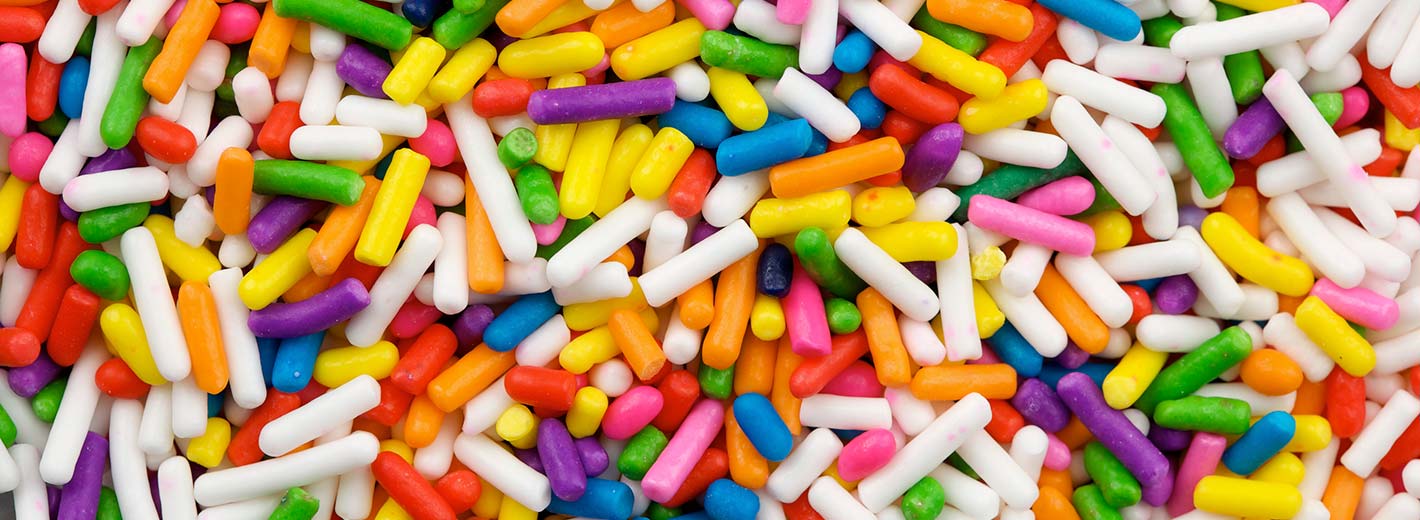
Wellness Tips from Bon Appétit: Color Me Crazy, or Understanding Food-Dye Safety
- by bonappetit
Are food colorings like Red #40 and Yellow #5 safe, or should we be avoiding them?
Food coloring has long been a part of our food system, giving a vivid and (marketers think) appealing look to cereals, candy, baked items, ice creams, and more. Most of us are familiar with the cool green color of mint chocolate-chip ice cream, for instance, but it’s naturally white before artificial colors are added. But as we begin to think more deeply about our food choices, it’s important to know that some of the dyes we associate with many common foods could be detrimental to our health.
Though it’s a topic of heated debate, the Food and Drug Administration (which is responsible for regulating food additives) considers many synthetic color additives to be safe to consume in food or drugs. The FDA maintains the list of food additives considered safe for use and requires that these additives be listed on the food package label. However, the safety of these synthetic additives has been questioned by many, including the nonprofit watchdog group the Center for Science in the Public Interest (CSPI).
CSPI has published a number of reports, including “Food Dyes: A Rainbow of Risks,” which details concerns like potentially increased risk of cancer and increased hyperactivity in children due to over-consumption of artificial colorings. There is some evidence linking particular food dyes to bladder and brain cancer in mice, but it’s extremely limited and we can’t translate the findings directly to humans. Some of the color additives like Yellow 5 and Red 40 have been linked to allergic reactions, but it’s rare. Stronger evidence connects food dyes to increased hyperactivity in children. A study conducted in Great Britain about food dyes and hyperactivity among children is often referenced.
The European Union requires food-dye warnings on some food labels, a measure CSPI has been pushing the FDA to put into place in the United States. Earlier this year, CSPI called for more action in the report “Seeing Red,” noting that artificial food dyes may not only be detrimental, but also don’t offer any nutritional benefit.
Many food companies in the European Union and Great Britain have removed synthetic food dyes from their food products, and the United States may finally be following suit. In 2015 and 2016 several large United States food manufacturers committed to removing artificial food coloring from packaged foods. In some cases, it’s already happened, and others plan to have solutions by 2017 or 2018. Plant sources of coloring like turmeric, paprika, beets, spirulina, and fruit or vegetable juices are replacing the synthetic versions. The flavor and texture that a natural or plant-based source of dye (like turmeric) may impart to foods is a challenge that food companies have had to overcome. It’s reasonable to expect this trend to continue among small and large food manufacturers alike, and also to expect some changes in familiar product colors. For example, one company notes that those vibrant blue and green colors found in their popular cereal are hard to replicate with natural sources.
The real-food movement is stronger than ever. As health-conscious consumers are demanding more natural options, food manufacturers are making the obvious choice to find natural coloring solutions.
When shopping for food, if you’re concerned about the health effects of synthetic food coloring, read the ingredients list. Or better yet, skip the processed and packaged foods altogether and enjoy whole foods with all the natural hues in Mother Nature’s palette!
At Bon Appétit, we know there’s a lot on your plate that you worry about. That’s why we have a team of registered dietitian nutritionists ready to answer your nutrition questions about which food choices will help you avoid unwanted pounds, work or study (and sleep!) better, and form long-lasting healthy eating habits. Email your questions and feedback to [email protected]